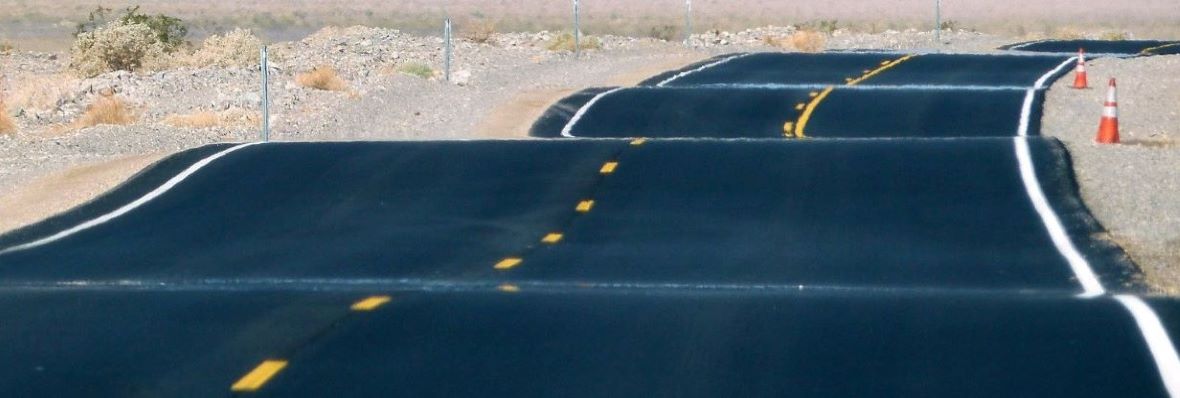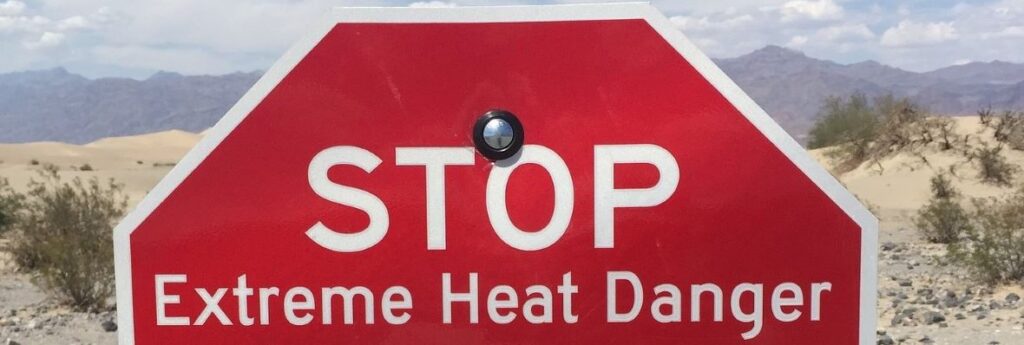The world’s the hottest day in more than 89 years and third hottest ever was recorded in Death Valley, California this week, foreshadowing even steamier days to come, fear experts.
If verified, the triple-digit temperature – 130 degrees F (54.4C) – would be the hottest day ever recorded on earth in August.
That 130 is only below the disputed all-time record of 134 degrees (56.67 Celsius) at nearly the same spot (the aptly named Furnace Creek) in 1913 and a 131-degree mark (55 degrees) in Tunisia in 1931, but both were in July, traditionally the planet’s hottest month.
The temperature on Aug. 16, recorded at 3:41 p.m., would beat marks of 129 (53.9 Celsius) recorded three times in recent years.

“We are having more extremes than we had in the past,” says Arizona State University professor Randy Cerveny, who co-ordinates the World Meteorological Organization’s extreme temperature team, which is investigating the mark.
He adds that the world is “creeping up on (the 134-degree record) year after year. That is something that cannot be denied. These extremes tell us a lot about what will happen in the future.”
The western heat wave is due to a “massive dome of high pressure” that keeps roasting the West and the normal Southwest monsoon that would provide rain and relief is missing, so there has been no cooling, Cerveny said.
The 130-mark capped a week and an ongoing summer of “very strange” weather, including a fire tornado formed during a wildfire near Chilcoot, California, worsened by the western heat wave; and a violent straight-wind derecho that devastated parts of Iowa, Illinois and Indiana, killing four people and causing billions of dollars in damages. Also, the Atlantic Ocean keeps setting records for earliest hurricanes, with 11 forming before mid August and the beginning of peak season.
“These kinds of things are certainly consistent with everybody’s expectation for what we expect to see more often” with man-made global warming, says Jennifer Francis, a senior scientist at the Woodwell Climate Research Center, in Cape Cod, Massachusetts.
Death Valley, an austere landscape in the desert of southeastern California, includes Badwater Basin, which at 282 feet (85.9 metres) below sea level is the lowest point in North America. Nearby mountains also help trap heat there and the dry land helps temperatures get hotter.
Summer heat is so routinely extreme that tourists are warned to drink at least a gallon (4 litres) of water each day, carry additional water in their cars, stay close to their vehicles and watch themselves and others for dizziness, nausea and other symptoms of potentially deadly heat illness.
“I’ve been in Death Valley for 122 (50 Celsius),” Cerveny says. “It’s just like being enveloped in a thick hot blanket of air. There is just no relief to it.”

